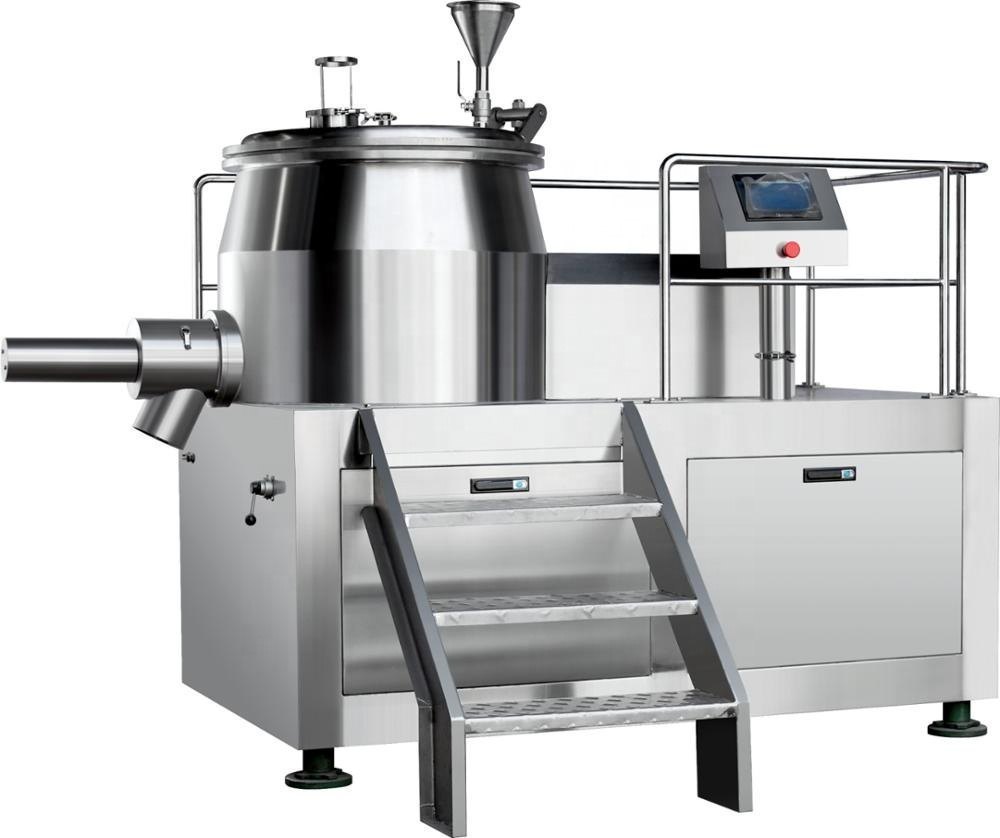What is Wet Granulation?
Wet granulation is a process that involves combining different particles of powder together using liquid solutions and adhesives.
In the wet granulation process, you will need a non- toxic and volatile granulating fluid to mass the powder particles.
Binding of the particles often occur through a boost action from an impeller and leads to an enlargement of particles.
Note that granulation does not depend on any compressive forces in the formation of granules.
What is a Wet Granulation Machine?
A wet granulation machine is an electromechanical device that you can use in binding particles together thus causing particle enlargement.
In short, you can define a wet granulation machine as an electromechanical device that you can use in wet granulation.
What is the Difference between Wet Granulation and Dry Granulation?
The main difference between wet and dry granulation is that wet granulation process requires the use of a granulating liquid.
On the other hand, dry granulation does not involve the use of any liquids in the granulation process.
Apart from that here are some other differences:
Dry Granulation Wet Granulation
It involves the direct compressing of finely ground powder. It involves mixing a granulating fluid with the finely ground powder, after which you will sieve to make tablets.
It involves the use of fine powder compounds, roll compactors, and tablet pressers. It involves the use of a sieve, powder particles, and a granulating fluid.
You can use it when producing tablets using compounds that are highly sensitive to heat and moisture. You can use it when there is a need to avoid the destruction of the active components in the powder particles.
Does Wet Granulation Offer More Benefits than Dry Granulation?
Yes, wet granulation offers more benefits than dry granulation in the following ways.
Wet granulation improves the flow properties of the ingredients
Allows you to easily increase granule size by increasing the moisture content thus making it easy flowability of final granules.
Improves material densification and compression characteristics.
It allows you to easily produce dense granules through the use of high shear granulator or mixer.
It allows for an easy process of obtaining homogenous mixtures
From the addition of a granulating liquid and use of a rotating impeller, you will easily make homogenous granules.
The high shear granulation machine increases the ease for better and even particle distribution.
It also reduces the pollution of air.
The granulating liquids such as organic solvents and aqueous solutions reduce dust that would otherwise cause air pollution.
Apart from that, the granulation liquids eliminate the possibility of generating and accumulating static charges.
It is more efficient and cost effective in comparison to the dry granulation process.
What are the Disadvantages of Wet Granulators?
Some of the demerits of using the wet granulators include:
It might lead to the possible loss of materials
There are numerous processes that occurs within the wet granulator machine that might lead to the loss of materials.
It is expensive to purchase and install
You will require a lot of space and time to install the machine because it is big in size.
Apart from that, the initial cost of purchasing the machine is high.
Using the wet granulation machine can be tedious
You can wear out easily die to the numerous processes involved when you are using the wet granulation machine.
Cleaning and maintaining the wet granulator machine is labor intensive and consumes a lot of time.
Wet granulation is a process used to produce granules from a powder mixture. The powder mixture is wetted with a liquid binder, and then the mixture is agitated to form granules. The granules are then dried and milled to the desired size.
Wet granulation is a common process used in the pharmaceutical industry to produce tablets, capsules, and other solid dosage forms. The process has several advantages, including:
It improves the flowability of powders, which makes them easier to handle and process.
It increases the bulk density of powders, which reduces the amount of space they take up.
It improves the uniformity of powders, which can lead to more consistent drug delivery.
Wet Granulation in Other Industries
Wet granulation is also used in other industries, such as the food, chemical, and cosmetic industries. In the food industry, wet granulation is used to produce dry mixes such as pancake mix and baking powder. In the chemical industry, wet granulation is used to produce pigments, dyes, and other powders. In the cosmetics industry, wet granulation is used to produce powders such as face powders and talcum powders.
The Purpose of Wet Granulation in the Pharmaceutical Industry
The purpose of wet granulation in the pharmaceutical industry is to produce granules that have the following characteristics:
The granules should be of uniform size and shape.
The granules should be free-flowing.
The granules should be strong enough to withstand handling and processing.
The granules should be compatible with the other ingredients in the formulation.
Alternatives to Wet Granulation
There are a few alternative processes that can be used to produce granules, such as dry granulation, spray drying, and melt granulation. However, wet granulation is the most common process used in the pharmaceutical industry because it offers a number of advantages over the other processes.
Advantages of Wet Granulation
The advantages of wet granulation include:
It is a versatile process that can be used to produce a wide variety of granules.
It is a relatively simple process that is easy to scale up.
It is a cost-effective process.
It produces granules that have good flow ability and uniformity.
Wet Granulation Pump Manufacturers
There are a number of wet granulation pump manufacturers, including are the preferred choice for the pharmaceutical industry because they offer a number of advantages, such as:
They are highly accurate and reliable.
They are easy to operate and maintain.
They are available in a wide range of sizes and configurations.



